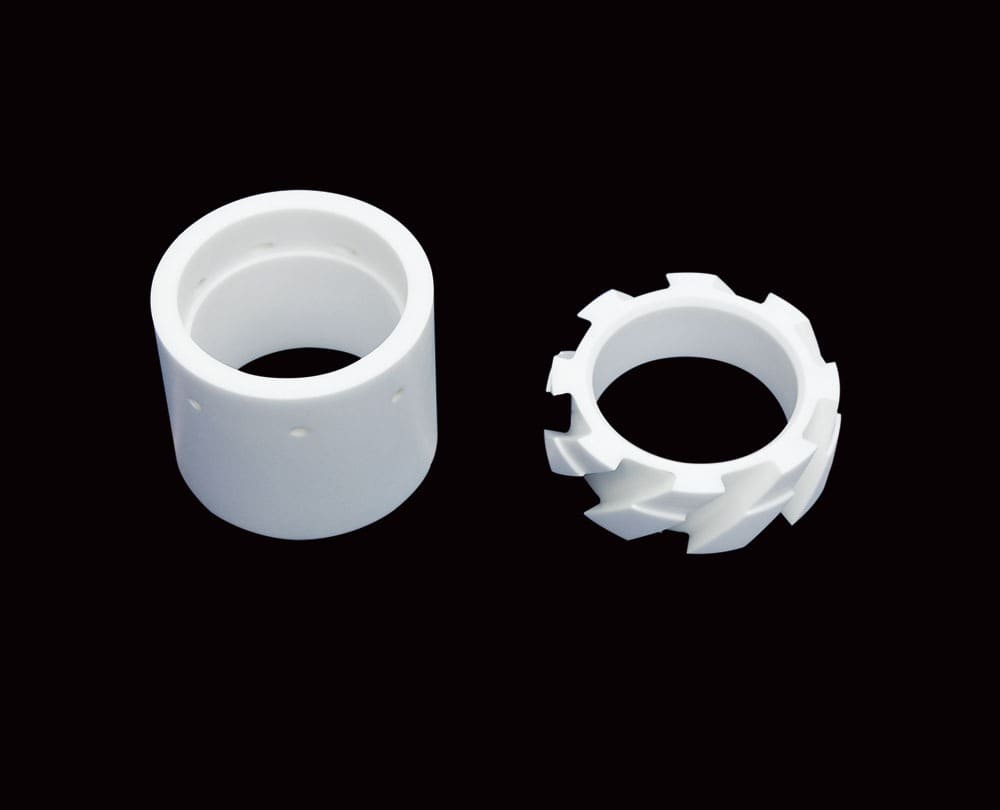Introduction
Zirconia ceramics (ZrO₂), or zirconium dioxide, are advanced materials valued for their mechanical strength, thermal stability, and electrical properties. Available in standard (95% ZrO₂) and toughened (85% ZrO₂) forms, these ceramics are key for material science research. This article examines the key properties of zirconia ceramics, supported by a comparative table, to highlight their significance in research applications.

Properties of Zirconia Ceramics
Zirconia ceramics exhibit a range of properties that make them ideal for material science studies. Below are their key characteristics:
- High Hardness: Vickers hardness from 12.3 GPa (standard) to 16.0 GPa (toughened), suitable for wear resistance studies.
- Mechanical Strength: Flexural strength from 500 MPa (toughened) to 1000 MPa (standard), ideal for strength studies.
- Low Thermal Conductivity: Ranges from 7.0 W/mK (toughened) to 10.5 W/mK (standard), supporting thermal insulation research.
- Electrical Insulation: Volume resistivity >10¹³ ohm-cm, perfect for electrical behavior studies.
- Corrosion Resistance: Minimal weight loss in acids (0.46 mg/cm² in H₂SO₄), ideal for corrosion studies.
Detailed Properties Table
The table below compares the properties of standard zirconia (95% ZrO₂) and toughened zirconia (85% ZrO₂).
Property | 95% ZrO₂ (Standard) | 85% ZrO₂ (Toughened) |
Main Characteristics | ||
Color | Black | Yellow |
Main Applications | High thermal conductivity, corrosion resistance | General use |
Characteristics | High toughness, insulation, and thermal conductivity | High toughness, insulation |
Mechanical Properties | ||
Bulk Density (g/cm³) | 6.0 | 4.15 |
Water Absorption (%) | 0 | 0 |
Vickers Hardness (GPa) | 12.3 | 16.0 |
Flexural Strength (MPa) | 1000 | 500 |
Compressive Strength (MPa) | 2580 | 1750 |
Young’s Modulus (GPa) | 200 | 337 |
Poisson’s Ratio | 0.31 | 0.23 |
Fracture Toughness (MPa m¹/²) | 4–5 | — |
Thermal Properties | ||
Thermal Conductivity (W/mK) | 10.5 | 7.0 |
Thermal Shock Resistance (ΔT°C) | 300 | 450 |
Coefficient of Thermal Expansion (10⁻⁶/K) | 10.5 | 7.0 |
Electrical Properties | ||
Volume Resistivity (ohm-cm) | >10¹⁴ | >10¹³ |
Dielectric Constant (1 MHz) | 11 | — |
Dielectric Strength (kV/mm) | 33 | 26 |
Chemical Properties | ||
Weight Loss in H₂SO₄ (mg/cm²) | 0.46 | 0.46 |
Weight Loss in NaOH (mg/cm²) | 300 | 450 |
Table Notes:
- Mechanical Properties: Toughened zirconia’s higher stiffness (337 GPa) offers insights into deformation resistance.
- Thermal Properties: Toughened zirconia’s thermal shock resistance (450°C) supports studies of thermal cycling.
- Electrical Properties: Standard zirconia’s dielectric strength (33 kV/mm) provides a benchmark for insulation studies.
Conclusion
Zirconia ceramics, in standard (95% ZrO₂) and toughened (85% ZrO₂) forms, offer exceptional properties for material science research. Their hardness, strength, and thermal stability provide valuable insights into advanced ceramic behavior.
Heeger Materials is a leading manufacturer and supplier of high-quality zirconia ceramic products in forms of plates, sheets, rods, tubes, crucibles, substrates, and customized parts, offering customized solutions for various industrial and research applications.


